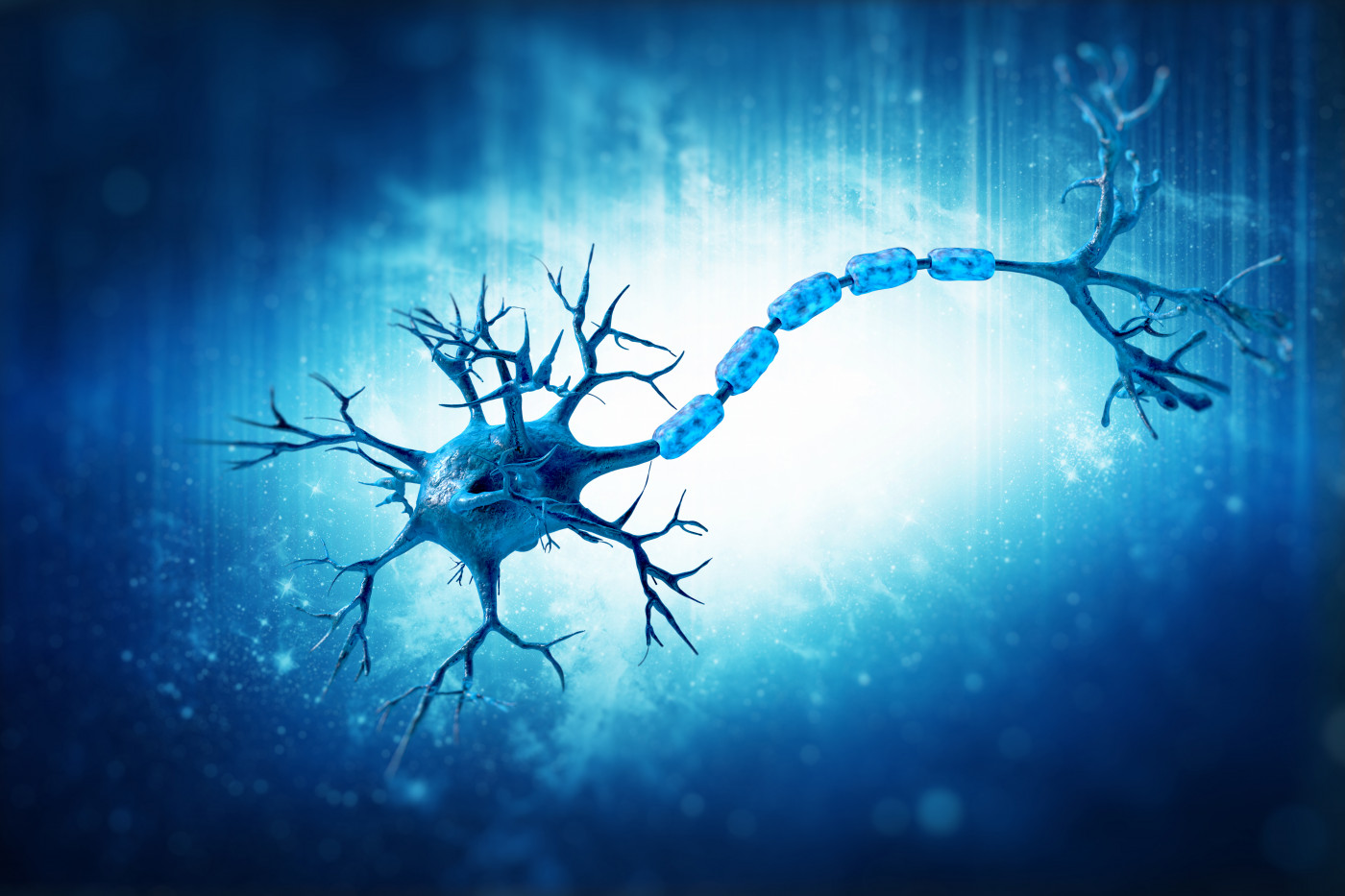Blocking Protein Called SARM1 Seen to Protect Nerve Cells from Damage Linked to MS

Blocking SARM1, a protein identified as a central mediator of nerve cell degeneration, works to prevent damage to axons — nerve cell fibers essential in cell-to-cell communication — and may be a way of treating neurodegenerative diseases like multiple sclerosis (MS), data from Disarm Therapeutics shows.
Specially, genetically deleting SARM1 was seen to protect axons and preserve nerve cell function in animal models of central, ocular, and peripheral axon’s disease. (Axons are the long, slender projections of nerve cells, also called neurons, whose job is to transmit information in the form of electrical impulses to other cells.)
These results were recently presented in a poster titled “SARM1 Deletion Prevents Degeneration of Peripheral and Central Axons,” at the 2018 Neuroscience conference in San Diego, California.
According to researchers, SARM1 is involved in a type of programmed self-destruction pathway that affects the axon of an injured cell. As such, it is the central driver of axonal degeneration.
They found that SARM1 inhibition reduced the levels of two biomarkers: cyclic ADP Ribose (cADPR), a compound that results from the action of SARM1, and neurofilament light chain (NfL), an axon-specific cytoskeletal protein released upon axon degeneration.
Interested in Multiple Sclerosis research? Sign up for our forums and join the conversation!
NfL is released into the blood and cerebral spinal fluid upon SARM1-mediated damage to axon, establishing its power as a biomarker, studies showed.
“The data presented at Neuroscience 2018 are important milestones in Disarm’s work as we develop small-molecule inhibitors that prevent axonal degeneration in diseases such as multiple sclerosis and peripheral neuropathies,” Rajesh Devraj, PhD, the company’s founder and chief scientific officer, said in a press release.
“We now have validated biomarkers [cADPR and NfL] that measure SARM1 activity and axonal degeneration. These are important tools for translating our therapies rapidly into human clinical trials and, ultimately, to patients,” Devraj added.
Disarm’s treatment approach is based on an earlier discovery at Washington University in St. Louis, showing that the enzyme SARM1 is a key driver of axon degeneration, a process that causes disability and progression in several diseases of the central, ocular, and peripheral nervous systems, including MS and amyotrophic lateral sclerosis (ALS). Researchers had earlier known that SARM1 was involved in the degeneration process, but thought that another, so-far unidentified enzyme was needed to perform key steps.
By inhibiting the SARM1 protein, Disarm hopes to prevent the loss of axons in these neurological diseases.






